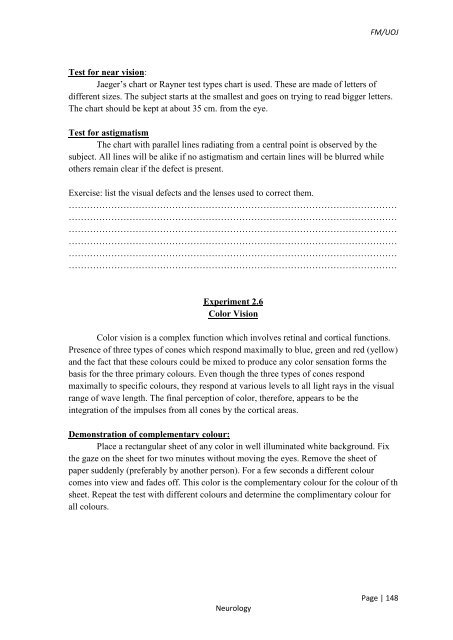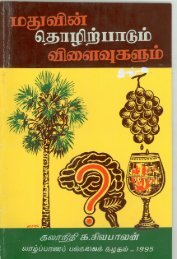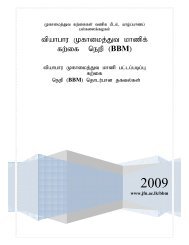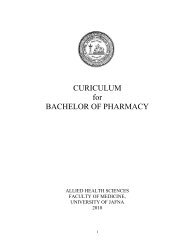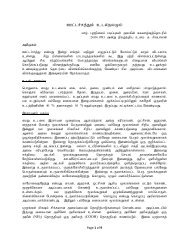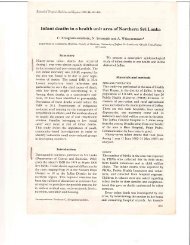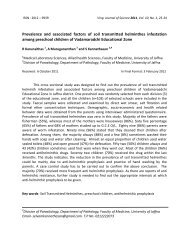MANUAL PHYSIOLOGY PRACTICAL - Repository:The Medical ...
MANUAL PHYSIOLOGY PRACTICAL - Repository:The Medical ...
MANUAL PHYSIOLOGY PRACTICAL - Repository:The Medical ...
You also want an ePaper? Increase the reach of your titles
YUMPU automatically turns print PDFs into web optimized ePapers that Google loves.
FM/UOJ<br />
Test for near vision:<br />
Jaeger’s chart or Rayner test types chart is used. <strong>The</strong>se are made of letters of<br />
different sizes. <strong>The</strong> subject starts at the smallest and goes on trying to read bigger letters.<br />
<strong>The</strong> chart should be kept at about 35 cm. from the eye.<br />
Test for astigmatism<br />
<strong>The</strong> chart with parallel lines radiating from a central point is observed by the<br />
subject. All lines will be alike if no astigmatism and certain lines will be blurred while<br />
others remain clear if the defect is present.<br />
Exercise: list the visual defects and the lenses used to correct them.<br />
………………………………………………………………………………………………<br />
………………………………………………………………………………………………<br />
………………………………………………………………………………………………<br />
………………………………………………………………………………………………<br />
………………………………………………………………………………………………<br />
………………………………………………………………………………………………<br />
Experiment 2.6<br />
Color Vision<br />
Color vision is a complex function which involves retinal and cortical functions.<br />
Presence of three types of cones which respond maximally to blue, green and red (yellow)<br />
and the fact that these colours could be mixed to produce any color sensation forms the<br />
basis for the three primary colours. Even though the three types of cones respond<br />
maximally to specific colours, they respond at various levels to all light rays in the visual<br />
range of wave length. <strong>The</strong> final perception of color, therefore, appears to be the<br />
integration of the impulses from all cones by the cortical areas.<br />
Demonstration of complementary colour:<br />
Place a rectangular sheet of any color in well illuminated white background. Fix<br />
the gaze on the sheet for two minutes without moving the eyes. Remove the sheet of<br />
paper suddenly (preferably by another person). For a few seconds a different colour<br />
comes into view and fades off. This color is the complementary colour for the colour of th<br />
sheet. Repeat the test with different colours and determine the complimentary colour for<br />
all colours.<br />
Neurology<br />
Page | 148


